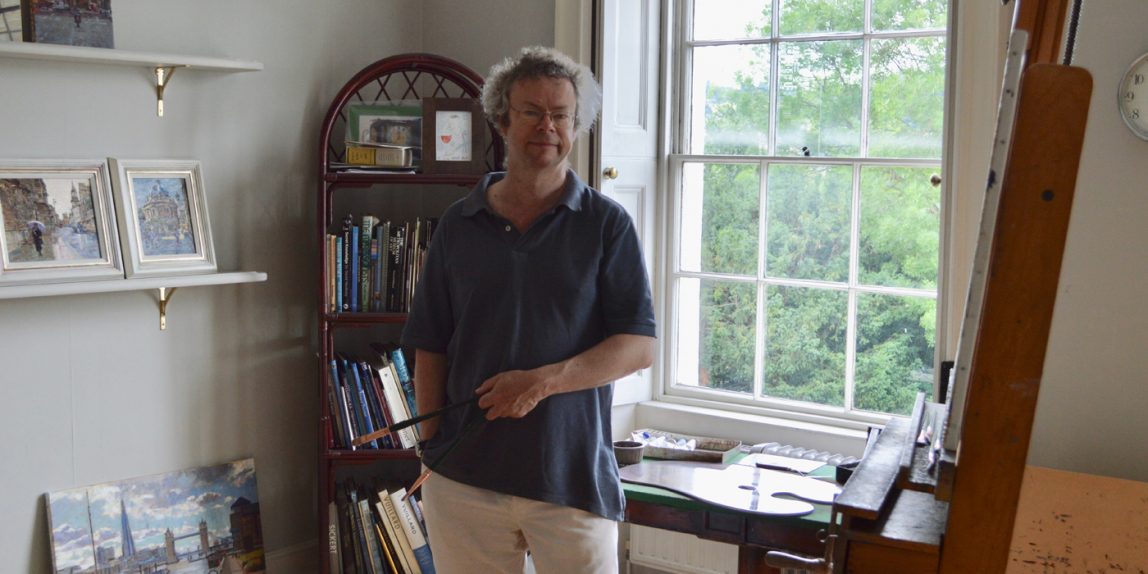I was born (in 1962) into an artistic family inasmuch as my father John Yardley is a watercolourist, but I have always concentrated on oils. I’ve been a full-time professional artist since 1996, and was fortunate to be taken on almost immediately by the Catto Gallery in Hampstead, London, where I had my first one-man exhibition in 1998. I have had biennial shows there ever since, and one-man shows at many other galleries. (A full list of my exhibiting history is given on the Exhibitions page.)
My painting style is most succinctly described as Impressionist. For as long as I can remember I have been fond of the work of the French Impressionists. What I especially like about these artists is their willingness to paint almost everything that passes before their eyes: for them, there is no hierarchy of worthiness in subject matter. Equally liberating, for me, is their brisk, vigorous paint-handling, especially as a means of conveying the fleeting effects of light. Their work, as a result, has a freshness and spontaneity that appeals to me much more than the artifice and studied perfection of the Old Masters. In fact, whenever I have the opportunity to compare a highly finished painting with a briefer study made in preparation for it — Turner and Constable come to mind here — I almost always prefer the looser, more vital treatment of the sketch, and this has undoubtedly shaped the way I paint.
Many of my favourite painters (e.g. Boudin, Monet, Sargent, Sickert, Whistler) loved painting Venice, and I am no different. I first visited in the 1990s, and have returned most years since. I am mystified by the prejudice against Venice paintings in certain quarters of the art world, for the picturesque qualities of this city are unique. Apart from anything else, there is a special thrill to be had from tackling views that are essentially the same as those Canaletto was painting nearly 300 years ago.
Since 2007 I have lived in the nearest equivalent England has to Venice, the beautiful Georgian city of Bath. This has spurred an interest in architecture, which has influenced my cityscapes in the sense that I am now much more likely to make individual buildings — as often as not cathedrals and churches — the focus of the composition. A recent, parallel enthusiasm for antique furniture has had a similar impact on my interiors and still-life paintings. With regard to the latter, my own (mainly Regency) furniture is pressed into service as props, and the resulting compositions are essentially interiors with an arrangement of flowers as a focal point, rather than straightforward studies of flowers.
There is always the chance, then, that a new enthusiasm will push my painting in a new direction, though I cannot see myself straying too far from the precepts and principles of Impressionism.
